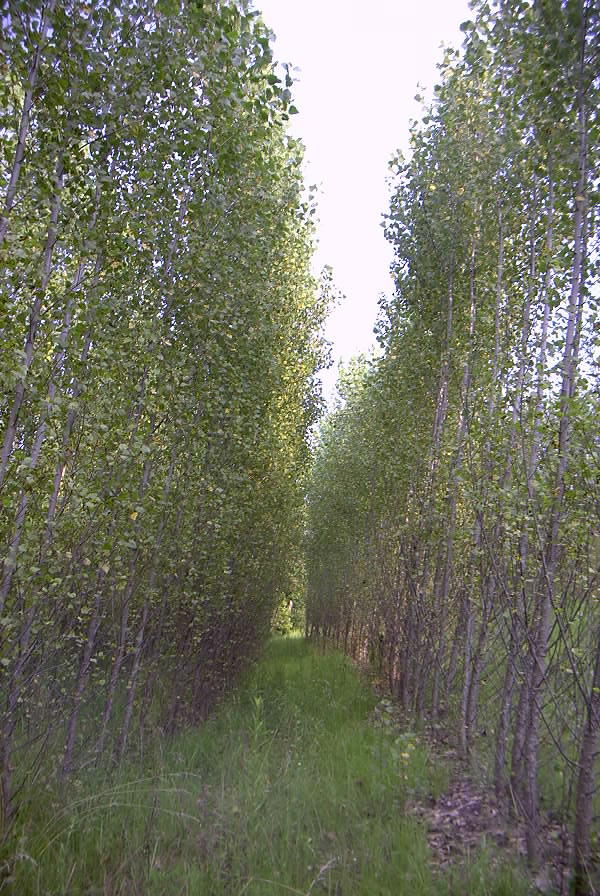Phytoremediation: Planting trees that absorb contaminated water

Phytoremediation employs natural technology by planting trees that absorb contaminated water, drawing toxic constituents out of the groundwater and associated soil and into the rhizosphere (area of soil and microorganisms that surround the main root ball). The trees are unharmed by the contaminants.
When it comes to groundwater treatment, there are a few basic treatment options. One method of treatment requires the installation of extraction wells, which draws out the contaminated groundwater to be treated. Another method uses chemicals injected into the groundwater to treat the contamination. A more recently developed biological method uses trees in a treatment option referred to as phytoremediation. Phytoremediation employs natural technology by planting trees that utilize the contaminated water, thereby treating the groundwater.
SynTerra has used phytoremediation to treat contaminated groundwater since 2001. One example is a confidential project in the state of North Carolina. A portion of land that sloped toward a nearby creek had contaminated groundwater, and instead of installing costly machinery, SynTerra chose to plant five tracks of hybrid poplar saplings. The roots of the hybrid poplars were treated with an inoculant to stimulate healthy growth before being planted into trenches.
The process behind phytoremediation is simple, as it follows the natural processes of biology. The deep-reaching roots of trees are ideal for extending to the groundwater. The trees “drink” the contaminated groundwater as they would any other water source, drawing the toxic constituents out of the groundwater as well as associated soil and into the rhizosphere (area of soil and microorganisms that surround the main root ball). Although the trees absorb the groundwater, they are unharmed by the contaminants.
In the first three weeks at the site, the hybrid poplar saplings had put on healthy foliage; in eight weeks, they had grown to approximately 5 feet; at 15 months, the saplings towered at 15-17 feet and the tract of land had become a full-fledged grove. Sixteen years after first planting hybrid poplars at the site, the phytoremediation site is still active and efficiently treating contaminated groundwater.
There are multiple methods of measuring the efficacy of phytoremediation, such as monitoring the actual growth of the trees, as well as taking sap flow measurements. Tests conducted on the groundwater surrounding the hybrid poplar tree stands as a testament that the trees are indeed treating and processing the contaminants.
Phytoremediation is not only an effective method of groundwater treatment—it’s a responsible method. Planting a grove of trees instead of installing large mechanical pumps is not only aesthetically pleasing, but far less expensive, not to mention environmentally friendly. Additionally, phytoremediation presents a long-term solution that becomes more effective as the trees continue to grow. Phytoremediation ought to be a top consideration for environmentally and financially conscious companies when choosing groundwater treatment options.





